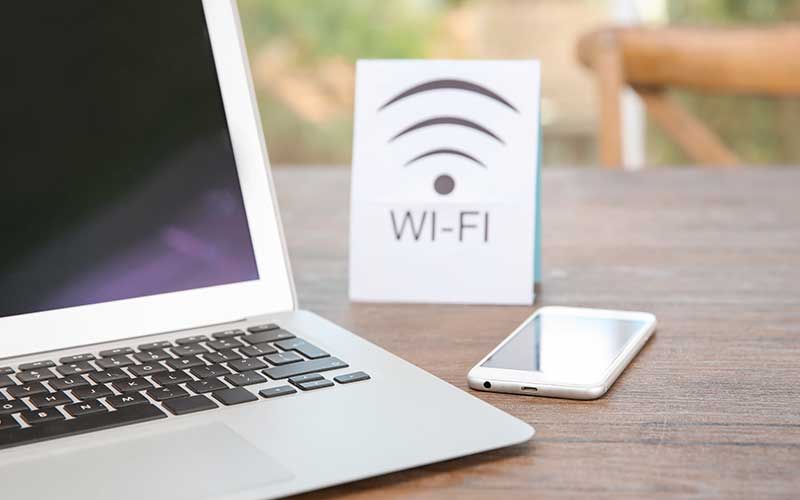Securing Your Digital Gateway: Setting Up a Secure Wi-Fi Network at Home
In today’s interconnected age, our lives revolve around the digital world. From smart appliances to personal computers, we are connected like never before. This digital revolution is largely facilitated by…
In today’s interconnected age, our lives revolve around the digital world. From smart appliances to personal computers, we are connected like never before. This digital revolution is largely facilitated by one central entity, a home Wi-Fi network. But, as we unlock the door to limitless possibilities, we also expose ourselves to potential digital threats. This article aims to guide you through setting up a secure Wi-Fi network at home, ensuring a safer digital experience.
Understanding Wi-Fi Networks
Before diving into the steps of creating a secure Wi-Fi network, let’s briefly grasp what a Wi-Fi network is. In essence, a Wi-Fi network is the invisible digital highway that links our devices to the internet. It’s crucial to secure this highway, as its openness could lead to unauthorized access, leading to potential data breaches.
What is a Wi-Fi network?
A Wi-Fi network is a wireless method used to connect devices like computers, smartphones, smart TVs, and even home appliances to the internet. This wireless connectivity is facilitated by a device called a router that transmits data via radio waves. The convenience of this setup is unparalleled, but it also comes with its own set of risks, particularly when the network is not secured.
The Risks of an Unsecured Wi-Fi Network
The digital world is not without its pitfalls. An unsecured Wi-Fi network can be likened to an unlocked house – anyone can stroll in. This open access can lead to various threats, including data theft and malware attacks, emphasizing the importance of a secure network.
The dangers of an open network
Unsecured Wi-Fi networks can expose your personal data, conversations, and even financial information to cybercriminals. These digital burglars can exploit this information for their own gain, or infect your devices with malware. They could even use your Wi-Fi to conduct illegal activities, implicating you in the process.
Creating a Fortress: Steps to Secure Your Wi-Fi Network
Now that we understand what a Wi-Fi network is and the potential dangers of leaving it unsecured, let’s explore how we can fortify our digital fortress. Each step is an essential layer of defense against various forms of cyber-attacks.
Choosing a Strong Password
The first line of defense in securing your Wi-Fi network is a strong password. This password acts as the key to your digital fortress, keeping intruders at bay. Hence, it’s crucial to choose a strong and secure password.
Characteristics of a strong password
A strong password should be unique, complex, and hard to guess. It should include a mix of uppercase and lowercase letters, numbers, and special characters. Avoid using common passwords or easily identifiable information, like your birthdate or name. Remember, the strength of your password is fundamental to the security of your Wi-Fi network.
Updating Your Router Firmware
Just like how you’d regularly maintain a physical fortress, maintaining your digital fortress is equally important. One crucial aspect of this maintenance is updating your router’s firmware. This helps ensure that your network is equipped to handle the latest threats.
The need for regular updates
Router firmware is the software that governs your router. Regular updates to this firmware are essential as they contain bug fixes, performance improvements, and patches for security vulnerabilities. By keeping your firmware updated, you ensure that your Wi-Fi network is well-protected against the latest known cyber threats.
Changing Default Network Name
A Wi-Fi network name, or SSID (Service Set Identifier), is like the address of your home in the digital world. It’s what identifies your network among a sea of networks. Changing this default name adds another layer of security to your network.
Why you should change your network name
Default network names often reveal the type of router you’re using, giving potential attackers a starting point to plan their attack. By changing this name to something unique and not related to you personally, you make it harder for cybercriminals to identify and target your network.
Enabling Network Encryption
Encryption is the process of converting information into code to prevent unauthorized access. By enabling network encryption, you’re essentially putting up a strong wall around your digital fortress that’s incredibly hard to penetrate.
Importance of network encryption
Network encryption scrambles the data on your network, making it unreadable to anyone without the correct decryption key. This means even if someone manages to access your network, they won’t be able to understand the information without this key. WPA3 is currently the strongest form of Wi-Fi encryption available and should be used if your router supports it.
Disabling Remote Management
Remote management is a feature that allows you to access your router’s settings from anywhere. While it may be convenient, it could also provide an opportunity for attackers to infiltrate your network.
Why you should disable remote management
Disabling remote management limits access to your router’s settings to devices on your network only. This means that even if an attacker knows your router’s password, they won’t be able to change its settings unless they’re physically connected to your network.
Setting Up a Guest Network
A guest network is a separate access point on your router that allows your guests to connect to the internet without giving them access to your main network and the devices connected to it.
Advantages of a guest network
Setting up a guest network can help protect your main network and its connected devices from potential threats that your guests’ devices might carry. It also prevents your guests from accessing your personal files and data.
Using a Network Firewall
A network firewall monitors and controls incoming and outgoing network traffic based on predetermined security rules, acting as a barrier between your secure internal network and the internet.
The role of a firewall in network security
A firewall is like the security guard of your digital fortress, inspecting and filtering out unwanted traffic. It helps protect your devices from being directly exposed to the internet, where they could be targeted by cyberattacks.
Installing Antivirus Software
Antivirus software is a program designed to prevent, search for, detect, and remove software viruses and other malicious software. It’s like having a health care system for your digital devices.
Importance of antivirus software
Antivirus software helps protect your devices from viruses, malware, ransomware, and other threats that can corrupt your files, steal your data, and even damage your hardware. It’s an essential part of maintaining a secure Wi-Fi network.
Regular Network Monitoring
Regular network monitoring involves routinely checking your network for any unusual activity or unauthorised access. It’s like having CCTV cameras in your digital fortress.
Why you should monitor your network
Regular monitoring allows you to spot any potential security threats early on and take appropriate action. This could include identifying unknown devices connected to your network, sudden spikes in data usage, or changes in your network speed or performance.
Conclusion
Setting up a secure Wi-Fi network at home is more important than ever in our increasingly digital world. By following these steps, you’ll be well on your way to creating a digital fortress, offering you and your family a safer online experience. Remember, digital security is not a one-time task but an ongoing process. Stay vigilant, stay updated, and keep your Wi-Fi network secure.
FAQs
- What is the importance of a strong password for my Wi-Fi network? A strong password is your first line of defense against unauthorized access to your Wi-Fi network. It should be unique and complex, making it difficult for potential intruders to guess.
- Why should I regularly update my router firmware? Regular firmware updates ensure your router can handle the latest threats. These updates often include bug fixes, performance improvements, and patches for security vulnerabilities.
- What is the advantage of changing my default network name (SSID)? Changing your default network name makes your network harder to identify and target for potential attackers. The name should not reveal personal information or the type of router you’re using.
- How does network encryption contribute to Wi-Fi security? Network encryption scrambles the data on your network, making it unreadable to anyone without the correct decryption key. This means that even if someone manages to gain access to your network, they won’t be able to understand the information without this key.
- Should I set up a guest network at home? Yes, setting up a guest network can add an additional layer of security. It allows your guests to connect to the internet without giving them access to your main network and the devices connected to it.
- What role does a network firewall play in securing my Wi-Fi? A network firewall acts as a barrier between your secure internal network and the internet. It monitors and controls incoming and outgoing network traffic based on predetermined security rules, helping to keep unwanted traffic out.
- Is antivirus software necessary for Wi-Fi security? Yes, antivirus software is an essential part of Wi-Fi security. It helps protect your devices from various threats, including viruses, malware, ransomware, and other malicious software that can corrupt your files or steal your data.
- Why is regular network monitoring important? Regular network monitoring allows you to spot any potential security threats early on. This could include identifying unknown devices connected to your network, or noticing sudden spikes in data usage, or changes in your network speed or performance.






